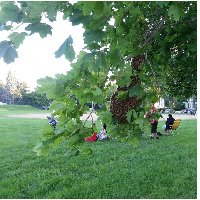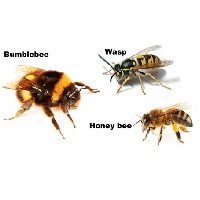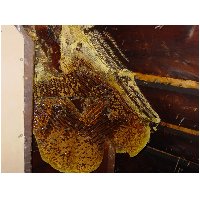Have you spotted a swarm?
While a honeybee colony can swarm during most warm months, mid-May through the end of June is considered swarm season for my area (NW Illinois.) The swarm splits off from an existing colony in search of a new place to setup their hive. The swarm will stop in an intermediate location, such as a tree branch, fire hydrant, car tire, or the soffit of a house while scouts are off checking for adequate habitat. A resting swarm is often seen hanging in a large cluster, or beard of bees. The bees often do not stay long once a scout has returned from a prospective cavity or other protected area that is suitable for setting up the new hive. Before the bees cluster together, people often see and hear the large frenzy of bees flying around as they prepare to land. If you have spotted a swarm, please get in contact with an experienced beekeeper immediately. This will increase the chance of a successful swarm capture.
While swarms are often gentle and non-reactive, it is best to avoid exposing yourself to the swarms without experience and adequate protection. Sometimes poor weather or other stimuli can cause the bees to treat nearby animals and people as a threat.



